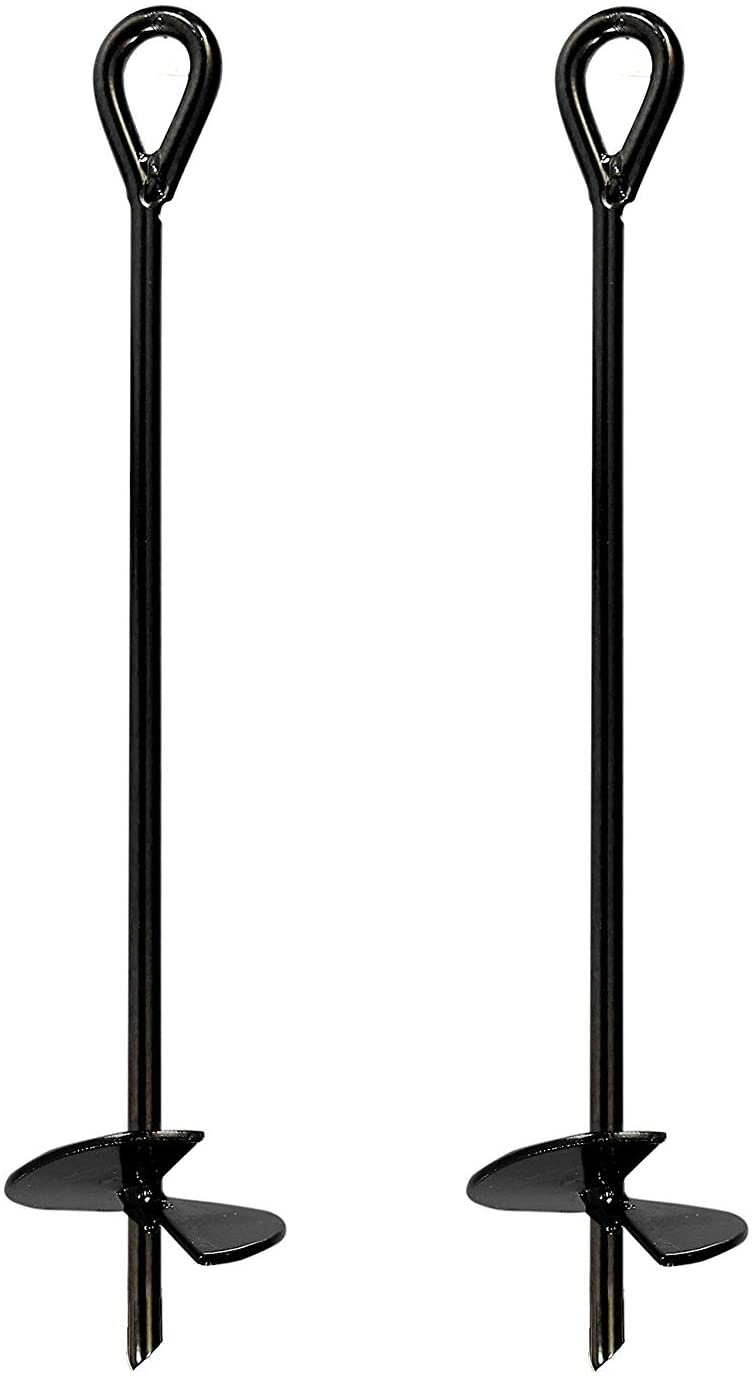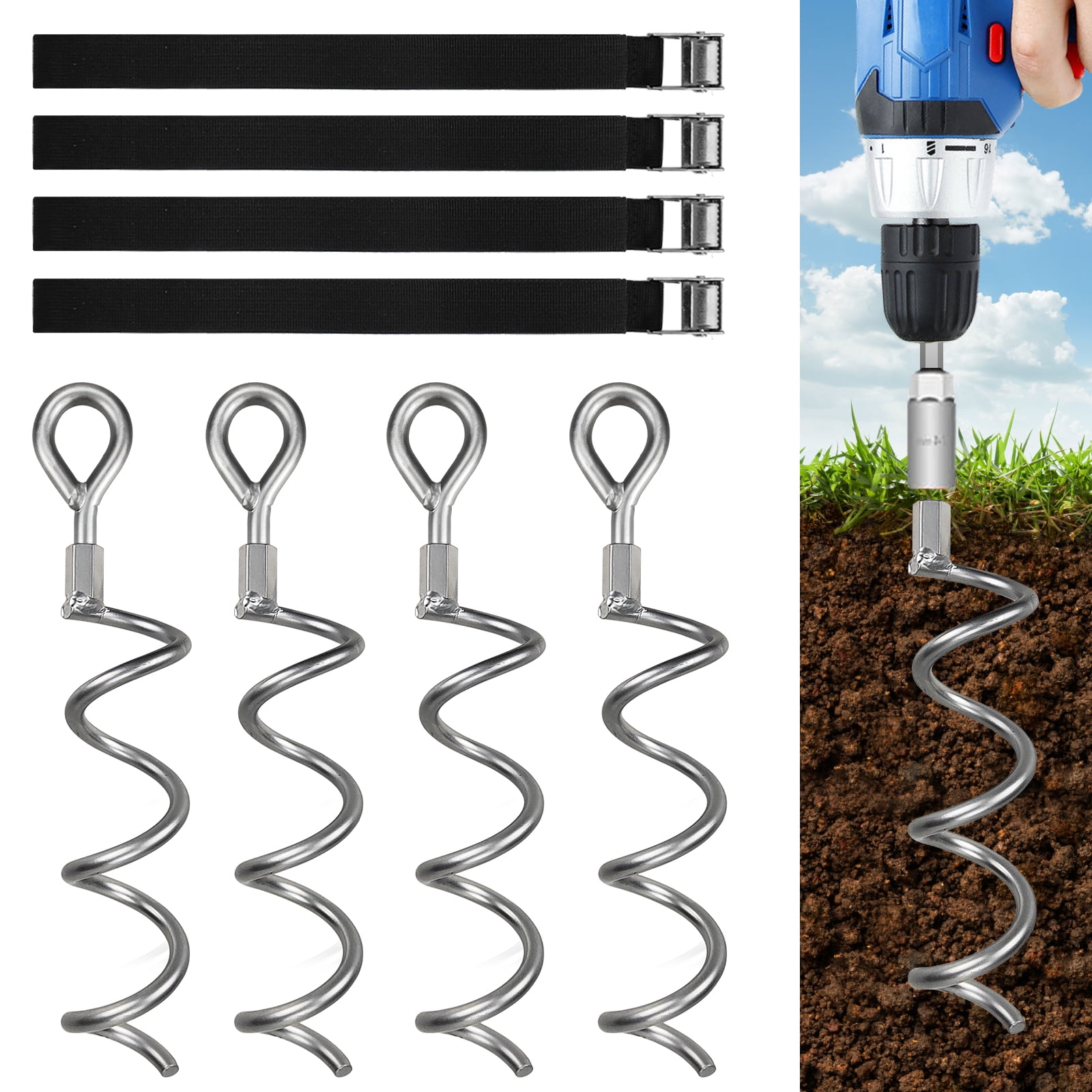Check Out the Various Kinds Of Ground Anchor for Your Next Task
When beginning on a construction or landscape design job, comprehending the numerous sorts of ground supports offered is crucial to ensuring both stability and resilience (Ground Anchor). From auger anchors, which excel in varied soil conditions, to risk supports made for momentary installations, the choices are various. Furthermore, concrete and screw supports present one-of-a-kind benefits in specific situations, while deadman supports are tailored for applications needing resistance to side pressures. The choice of an appropriate anchor type can considerably influence the total success of your job, prompting more expedition into their respective benefits and applications.

Auger Anchors
Auger anchors are a preferred selection in different building and construction and landscape design jobs as a result of their one-of-a-kind style and efficient securing abilities. These supports are composed of a helical screw-like shaft that is driven right into the ground, enabling for a safe and secure and stable hold. The spiral style promotes simple installation and takes full advantage of resistance against side pressures, making auger anchors specifically effective in applications such as fencing, short-lived structures, and erosion control.
The installation process of auger supports is fairly simple. Auger anchors can be conveniently removed and recycled, which includes to their cost-effectiveness and sustainability.
One of the considerable advantages of auger supports is their capability to distribute loads uniformly across the bordering soil, lowering the risk of dirt disturbance and lessening ecological impact. Additionally, they are less prone to loosening up or heaving with time compared to typical securing methods. As a result, auger anchors are an outstanding selection for projects requiring trustworthy and long lasting anchoring options.

Risk Anchors
When it comes to securing frameworks in a variety of exterior applications, stake anchors supply a dependable and straightforward remedy. These anchors are usually built from resilient materials such as steel or aluminum, made to endure ecological stresses while offering optimal stability. Their basic layout enables for quick setup, making them an optimal choice for long-term or temporary anchoring needs.
Risk anchors are particularly beneficial in securing camping tents, canopies, and various other light-weight structures versus wind and weather condition. They operate by being driven into the ground at an angle, producing a solid hold that withstands pull-out pressures - Ground Anchor. The effectiveness of risk anchors depends on a number of factors, consisting of dirt type, wetness content, and the angle of installment
For included protection, many stake anchors include add-on points for straps or ropes, enabling stress changes as required. In applications such as landscaping or building, they can efficiently support tools or structures on uneven terrain. Generally, risk supports give a versatile and affordable service for protecting various outdoor installations, making them a favored selection for contractors and DIY lovers alike.
Concrete Anchors
Concrete supports supply a robust remedy for securing frameworks to concrete surfaces, making certain security and safety and security in various applications. These anchors are important for jobs ranging from household building and constructions to large-scale commercial installments. They come in different kinds, consisting of development anchors, glue supports, and undercut supports, each designed for details load requirements and ecological problems.
Adhesive supports use high-strength epoxy or resin to bond the anchor to the concrete, using superior load-bearing capacities, particularly in split concrete circumstances. Undercut supports develop an one-of-a-kind shape within the concrete, offering outstanding holding power, especially in applications where tensile lots are common.
Selecting the suitable concrete support entails considering variables such as the weight of the tons, the problem of the concrete, and ecological conditions. Correct setup strategies are critical to make certain ideal efficiency and reliability. When performed correctly, concrete supports substantially enhance the structural honesty of various tasks, navigate here making them essential in modern-day construction techniques. Recognizing the specific requirements of your task will assist in picking the appropriate sort of concrete anchor for the task.
Screw Anchors

Screw anchors are a versatile fastening service that can be properly used in a selection of applications where typical concrete anchors may not suffice. These supports contain a helical design that permits them to be conveniently driven right into the ground, making them ideal for usage in dirt and other substratums. Their distinct framework offers excellent holding power and resistance to pull-out pressures, making them suitable for countless jobs, from landscaping to architectural support.
One of the primary advantages of screw supports is their ease of installment. They require marginal devices and can frequently be installed without the requirement for excavation, which conserves both time and labor costs. Furthermore, screw supports can be eliminated and reused, supplying a sustainable remedy for short-lived applications.
Screw anchors are specifically valuable in locations where soil problems are challenging, such as loose or sandy dirts. Their ability to be mounted at varying depths enables personalization based upon details project requirements. On the whole, screw supports offer a dependable and effective anchoring method, making them an exceptional option for designers and service providers looking for efficient solutions for their projects.
Deadman Anchors
Deadman supports work as a robust option for supporting structures in tough problems, especially where standard anchoring approaches may fall short. These supports contain big, hefty items buried underground, which create home resistance against side forces. The design usually includes a horizontal element, such as a block of concrete or a steel plate, hidden in the soil, to which straps or cable televisions are attached.
The efficiency of deadman anchors depends on their capacity to distribute lots over a larger location, reducing the risk of failing in unsteady soil problems. They are especially beneficial in applications such as retaining wall surfaces, short-lived structures, and slope stabilization, where soil movement can endanger the integrity of the structure.
Installment of deadman supports needs careful preparation to ensure they are put at the correct depth and positioning, optimizing their load-bearing capacity. While they might call for even more labor and material than lightweight supports, their reliability in adverse problems makes them important for long-lasting tasks. Deadman anchors are versatile and can be adapted to various applications, making them a best option for engineers facing one-of-a-kind obstacles in their jobs.
Verdict
In recap, choosing the appropriate sort of ground support is important for guaranteeing stability and protection in different projects. Auger anchors succeed in diverse dirt conditions, while risk anchors fit short-term applications. For great site concrete surface areas, growth and glue anchors offer reputable alternatives, and screw supports use adaptability in challenging terrains. Deadman anchors are especially effective in standing up to lateral forces for maintaining walls. Cautious consideration of these alternatives will improve task end results and structural honesty.
In addition, concrete and screw supports existing one-of-a-kind advantages in details scenarios, while deadman anchors are tailored for applications requiring resistance to side forces - Ground Anchor.Auger supports are a popular selection in numerous building and construction and landscaping jobs due to their distinct style and effective anchoring abilities. They come in different kinds, consisting of development supports, glue supports, and undercut anchors, each developed for particular tons needs and ecological conditions
Adhesive anchors make use of high-strength epoxy or resin to bond the support to the concrete, providing premium load-bearing abilities, particularly in cracked concrete situations. Generally, screw supports offer a effective and reputable securing method, making them an excellent choice for designers and professionals seeking reliable services for their tasks.